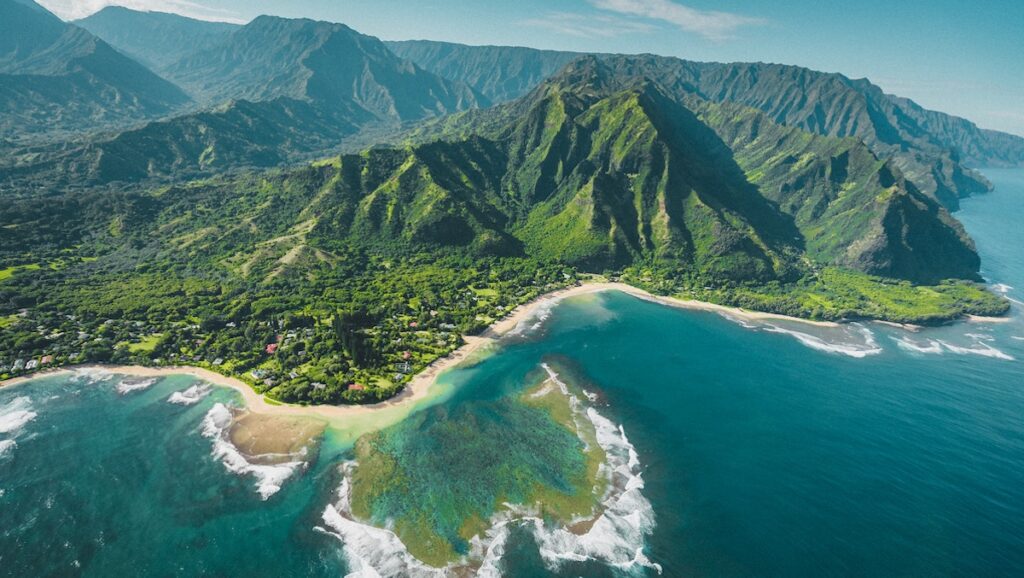As someone who grew up in the Midwest, Hawaii used to hold a certain amount of mystique. As an adult who has visited the state, it’s hard to wrap your head around how strange it is that Hawaii is part of the same country as the one I grew up in. It’s not even an overseas territory like Guam, which Hawaii is far more similar to than say, I don’t know, Massachusetts.
I knew Hawaii became a state recently, and I knew that the bombing of Pearl Harbor was the flashpoint of the Pacific theater of World War II, and maybe I knew that it was colonization in some sense, but boy… Hawaii is a rough one.
How rough? The existence of Hawaii as a state is cringeworthy enough that the United States formally apologized for it in 1993.
The History of Hawaii as a State
The short version of the history of Hawaii’s statehood is as follows.
Prior to the late 18th century, there is not a lot of written history regarding the indigenous people of Hawaii. Suffice it to say, there were indigenous people of Hawaii. The Hawaiian Kingdom came into existence when King Kamehameha united the islands in about 1795, and in 1846 the Tyler administration recognized Hawaii’s independence as a nation, prompting international treaties around the globe. The Kamehameha family line ended in 1872 and the Kalakaua House ruled until 1893. Things got bad before 1893, however.
In early 1887 – you can’t make this stuff up – a group of “mostly non-Hawaiians calling themselves the Hawaiian Patriotic League began the Rebellion of 1887.” They used inside conspirators to force the king to dismiss his Cabinet members and sign a new constitution, which removed most of his powers under threat of assassination. Just another group of patriots doing very cool things, I guess.
The fallout was that the United States government basically said that in the event of any uprising in the future, all efforts would be made to protect U.S. investments in Hawaii. It may come as a shock to you that this could work to the detriment of the native people of Hawaii and exclusively favor rich white Americans. You can probably see where this is going.
Ultimately, in 1893, the monarchy was overthrown. The process was led by a group who seriously called themselves the Committee of Safety, and who basically gained prominence by saying “We, the non-native white businesspeople who have made a lot of money, are at risk of losing a tiny bit of our money and power to the GREEDY hands of the monarchy which we already weakened at knifepoint. Who’s going to protect us?!” Their goal was to be annexed into the United States and thus be protected by all things USA. The overthrow was completed in January of 1893 as the queen opted to surrender rather than risk bloodshed to her people.
But see, the USA had a hand in all of this. President Benjamin Harrison’s secretary of state agitated for years on the side of annexing Hawaii into the USA as he felt it would be a tremendous military stronghold in the Pacific. American politicians and lawyers and businessmen were instrumental in every step of rebellion and overthrow.
That’s the short summary. So where does the apology come in?
Immediately after the overthrow, new president Grover Cleveland launched an investigation, which concluded that “United States diplomatic and military representatives abused their authority and were responsible for the change in government.” In other words, oopsies. But President Cleveland felt it was wrong and publicly declared that the U.S. should return Hawaii to its royal family and resume the monarchy.
But wouldn’t you know it, Sanford Dole, the newly appointed president of the provisional government of Hawaii (and cousin to James Dole, who founded what later became Dole Food Company, which is to say another super rich white guy on someone else’s land), said no. He simply refused to reinstate the queen. Case closed.
Quite literally nothing else happened on the matter for almost a century, and that’s including the importance of Hawaii in World War II and finally recognizing Hawaii as a state in 1959.
Ninety years later, in 1983, the Native Hawaiian Study Commission submitted a final report to Congress and stated that the United States government had no “historical, legal, or moral obligation… to provide reparations to Native Hawaiians.” And just to show how much conviction they truly felt about not needing to make amends, ten years later, Congress passed what is commonly known as the Apology Resolution, which is why we’re here today.
The Details of the Apology Resolution Regarding Hawaii
In short, the Apology Resolution is a joint resolution signed by President Clinton 100 years after the overthrow of the Kingdom of Hawaii that, to paraphrase, states, “This overthrow occurred due to U.S. citizens and possibly U.S. officials. We should not have done that. Hawaii should be yours, Native Hawaiians, as we basically ruined your sovereign country.”
It is one of the only times in history that the U.S. government has apologized for…. well, anything, really. It wasn’t until 2009 that Congress passed a similar resolution acknowledging the role of the federal government in the less-than-stellar treatment of Native Americans, which calls into question whether Native Hawaiians should be considered Native Americans, but perhaps that’s a separate issue.
Some type of epilogue to this tale is that there is a Hawaiian sovereignty movement, which has been moderately active over the last century. It doesn’t appear to be taking hold, but maybe someday we’ll see a free and independent Hawaii again. And maybe Puerto Rico will be a state. Anything is possible, I guess.
Sorry, Hawaii.
